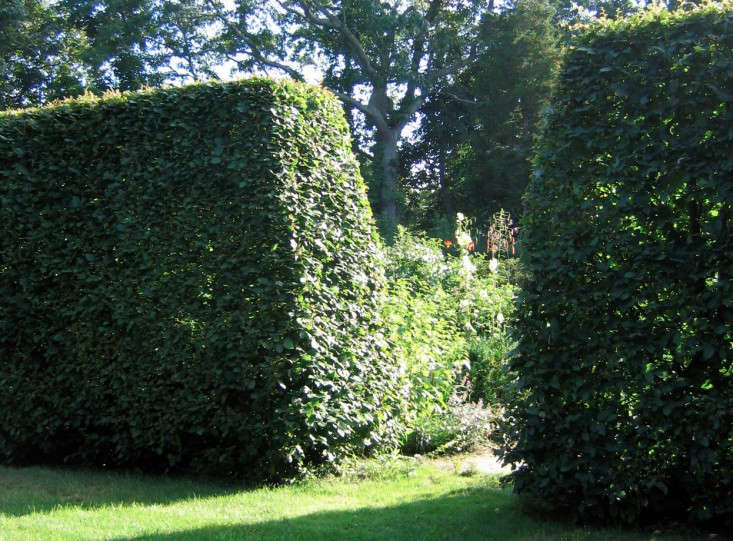Every gardener has a signature, and Deborah Nevins’s is the monumental hedge. Her NYC-based landscape design firm Deborah Nevins & Associates deploys walls of uniform greenery to organize and define space in projects as diverse as a Hudson Valley estate surrounding a Neoclassical mansion; a 40-acre park for a Renzo Piano-designed cultural foundation in Athens, Greece; the courtyard of a new Tribeca loft building; and her own East Coast weekend house near the water.
At home, Nevins has hedges within hedges: layers of towering hornbeam, privet and yew, punctuated throughout with five types of rounded boxwood. She invited Cara Greenberg to visit:
Photography by Deborah Nevins except where noted.

Nevins, a member of the Remodelista + Gardenista Architect/Designer Directory, grew up in New York City and New Haven. One of her earliest memories is collecting wildflowers with her mother in a New England field. Her career in landscape design began when she was studying architectural history at Columbia University in the 1980s (“They didn’t think landscape history was academically serious enough”). Someone asked her to help with a garden in Connecticut–and it happened to have been laid out by landscape-design luminary Russell Page.


Around the perimeter of the property, she left in place tall cedars, junipers, American beech, and red and white oaks. Within this ring of native woodland are three well-defined, hedge-rimmed garden rooms: one in front of the house, centered on a majestic white oak, and two in back. “I knew the spaces from the very start,” Nevins says.


The impressive wedge-shaped hornbeams were planted at 4 feet and grew to twice that height in just a few years. Nevins clips them heavily in February or March and again, lightly, in June.



N.B.: This post is an update; it was first published July 2014.
See more of Nevins’s work in our Architect/Design Directory on Remodelista.
And if you’re lusting for a hornbeam hedge (who wouldn’t be at this point?), see:
- Hornbeam: A Hedge for All Seasons
- Hardscaping 101: Hedges
- Landscape Ideas: Boxed in by Boxwood? 5 Shrubs to Try Instead








Have a Question or Comment About This Post?
Join the conversation